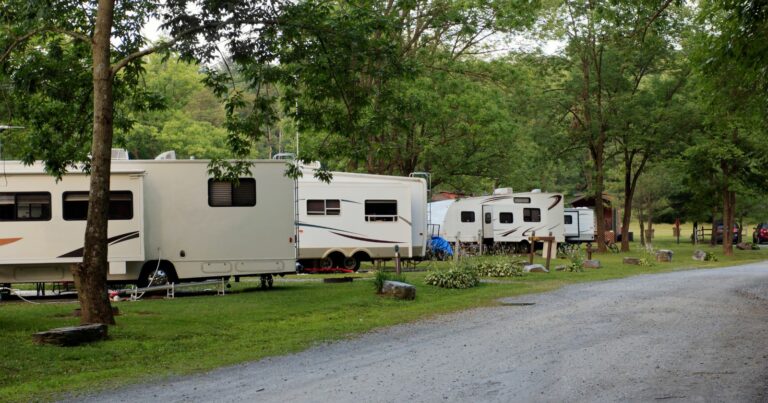What is the Angle for a Camping Hammock?
The fading sunset casts an amber glow over your swaying hammock as you rock gently to the sound of rustling leaves. You take a deep breath of the pine-scented air, feeling your worries melt away.
Hammock camping promises peaceful nights under the stars, but only with the perfect setup. As you string up your cozy cradle between trees, you wonder – what’s the optimal angle? In this post, we’ll explore how to find that sweet spot for your suspended shelter.
With a few easy calculations and adjustments, you can achieve hammock harmony and the best night’s sleep in the forest. Let’s achieve hammock nirvana together under the moonlight! Dreamy relaxation awaits in your hanging oasis.
Why Hammock Angle Matters
Hanging your hammock at the proper angle makes all the difference for a restful sleep. Here’s why it’s important:
- The right angle provides ergonomic support for your body’s natural curves without sagging uncomfortably.
- You want to achieve a stable, level position so you don’t slide or slosh from side to side.
- A good angle lets you lie diagonally in the hammock, which is the most comfortable alignment.
- The ideal angle creates just enough tension on the hammock fabric to avoid flopping.
- With some basic geometry, you can calculate the optimal angles to aim for based on hammock length and strap height.
Putting in the effort to find the sweet spot angle will help you get truly peaceful shut-eye suspended outdoors.
How to Measure Your Hammock for Angle
Before stringing up your hammock, you’ll need to take a few key measurements:
- Hammock length – Measure total end-to-end length along bottom edge.
- Hammock width – Measure the width across the middle.
- Strap height – Measure vertical height you’ll secure straps to trees.
- Tree distance – Measure horizontal space between anchor points.
- Your height – Note your total height to personalize angles.
Having these hammock dimensions and distances will allow you to calculate ideal hang angles.
Basic Formula for Calculating Hammock Angle
The optimum hammock angle varies based on your measurements, but you can determine the right angles using this basic trigonometry formula:
Angle = arctan(Strap Height / Tree Distance)Plug in your strap height and tree distance to get angle in degrees.
For example:
- Strap height: 5 ft
- Tree distance: 10 ft
- Arctan(5/10) = 26 degrees
Use a calculator or phone app to easily determine the arctan values.
Ideal Hammock Angle Ranges
While specific angles depend on your gear, these are recommended target ranges:
- Tree distance: 10-15 feet apart. Farther and hammock sags uncomfortably.
- Strap height: Around 4-6 feet off the ground to keep you elevated but not too high.
- Angle: 25-35 degrees is optimal for most people. Allows diagonal lie.
- Total arc: Aim for a 120-140 degree total arc, or 60-70 degrees per side.
Adjust your hang until it feels taut but still comfortable. Some experimenting might be needed.
Personalizing Angles Based on Your Height
Your specific height should factor into the angles you aim for too:
- If you’re under 5’6″, stick to the low end of the 25-35 degree angle range.
- For people 5’6″ to 6′ tall, target the middle angles around 30 degrees.
- If you’re over 6′ tall, go with wider angles around 35 degrees for enough diagonal room.
The right height and angles will allow both your head and feet to lie flat.
Tips for Achieving Ideal Hammock Angles
Here are some tips for dialing in the perfect hammock hang angles:
- Adjust strap lengths on each end to modify angles. Make small changes a few inches at a time.
- Use tree straps at least 2 inches wide to protect bark and anchor securely.
- Hang hammock between trees 6-12 inches in diameter for stability. Avoid small saplings.
- Use suspension systems like daisy chains to give you multiple adjustable lengths.
- Try a structural ridgeline running through your hammock’s center to maintain the ideal sag.
- Check angles with an adjustable hanging protractor tool.
Experiment until you find the ideal angles and get that sweet spot for sleeping. It’s worth it for the best night’s rest!
Achieving the Perfect Hammock Lie
Dialing in the right angles will allow your body to lie in the optimal diagonal position inside the hammock. Here are tips for a great lie:
- Lie centered in the hammock with your head and heels equally supported.
- Let your legs be slightly bent for a relaxed position.
- Place a pillow under your knees to align your back neutrally.
- Angle yourself diagonally rather than straight across for a flat lie.
- For extra comfort, use a sleeping pad inside the hammock.
Getting the perfect ergonomic alignment inside your hammock takes some practice but is worth mastering.
Setting Up a Rain Fly for Protection
For added protection from rain, wind, and sun, set up a:
- Tarp ridgeline running above your hammock between the same two trees.
- Hang a square or hexagonal silnylon rain fly over the ridgeline using line and stakes.
- Angle rain fly edges away from prevailing winds to shed water effectively.
- Allow at least 12-20 inches of space between tarp and hammock.
A properly hung rain fly creates an ideal shelter above your cozy hammock haven.
Enjoy Peaceful Hammock Camping!
One of life’s greatest simple pleasures is drifting off to sleep gently rocking in your suspended hammock sanctuary as insects chirp and leaves rustle above. With the right geometry, you can achieve hammock nirvana. Calculate ideal angles based on your measurements and gear. Hang your hammock with precision between study anchor points, allowing for the perfect body alignment inside. Top it off with a protective rain fly, and you have a dreamy, elevated oasis awaiting under the night sky. Sweet hammock camping dreams!







